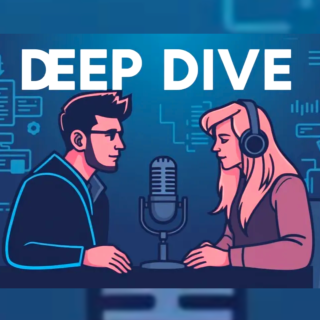Okay, let's dive in. We've got this collection of sources about MIMO, a personal
notes application.
Yeah, that's right.
And our goal today is really to break it down, make it super clear what this thing
actually
is, how you use it, and why you might even want to. Trying to make it easy to grasp
for
anyone listening.
Exactly. We'll sift through this material and pull out the main points for you.
And just before we jump in, a quick shout out to Safe Server for supporting this
deep
dive. They handle hosting and can help with digital transformation stuff. If that
sounds
interesting, check them out at www.safeserver.de.
Good folk to have backing things up.
Definitely. Okay, Mimo, looking at these sources, the core vision seems to be about
having one
single safe place for, well, everything you might want to remember.
Yeah, they list things like thoughts, ideas, links, research, pictures, memories,
basically
all the stuff rattling around in your brain or saved in random places.
Kind of the opposite of sticky notes everywhere or like a dozen different apps,
right?
Precisely. The sources frame it as simplifying your life by giving you one place to
just
capture whatever's on your mind. Making it easy to get started? Just get it down.
Okay, capturing is one thing. We all try to do that. But finding it later, weeks,
months,
maybe years later, that's usually the tricky part. How do the sources say memo
handles
that?
It's retrieval. Well, they highlight two main approaches here. First up is using
hashtag
hashtags.
Ah, like on social media.
Exactly like that. So you can tag notes, group things together, give them some
structure that
makes sense to you. It's pretty flexible.
Okay, tagging helps if you're organized. But what if you forget to tag something or
you just remember a specific word or phrase you used?
And that's the second method they talk about, which sounds quite powerful. Full
text search.
Meaning?
You can just type in a word or phrase and it'll search through the entire text of
all
your notes, even the ones you never tagged.
Oh, interesting. So even if you didn't perfectly categorize something when you
saved it, you
can still potentially find it just by remembering what you wrote.
That seems to be the idea. Yeah. Making it hard to actually lose stuff once it's in
there.
Safety net, kind of.
That combo, tags for structure, search for everything else, sounds pretty robust.
What
about actually using it day to day? The sources mention the experience.
They do. A couple of key things. One is full markdown support.
For formatting, like bold text, lists.
Yeah, exactly. Headings, links, all that standard stuff to make your notes more
readable than
just plain text. And the other big thing is how it's structured. Everything's
apparently
in one single continuous feed.
One feed, not folders or notebooks.
Doesn't sound like it. They just describe it as simple. The idea seems to be you
capture
everything into this stream and then rely on those hashtags and the search to find
what
you need when you need it.
That is simple, I guess. Less time organizing, maybe more time just capturing. But
with all
your personal stuff in one place, data control must be a concern for people. What
do the
sources say?
That's a point they seem to emphasize quite strongly. The phrase used is you never
get
locked in.
Meaning you can get your data out.
Yes. Important export functionality is mentioned specifically. You own your data,
you can back
it up, move it somewhere else if you wanted to. You're not trapped in their system.
Okay, that's reassuring. Big plus. Does it mention anything about sharing or
working
with others? Or is it purely personal?
It does touch on sharing. The sources say you can share notes, work together, even
follow
public feeds if people make them available.
So it has potential for collaboration or maybe sharing knowledge publicly alongside
the private
stuff?
Seems like it bridges both. And related to that openness maybe is that it's an open
source
project.
Ah, okay. So the code is available.
Yep. Get the code, contribute and enjoy. That's how they put it. So transparency,
community
involvement, potential, the usual benefits of open source.
Gotcha. And there were a few technical details tucked away in the sources too.
Just footnotes really. It's hosted on GitLab, uses an MIT license, which is a very
permissive
open source license. And the creation date listed is March 31st, 2025.
So fairly recent then. Still maybe evolving.
Could be. But putting it all together, the simple capture, the powerful findability,
the data control, the open nature. It paints a picture of a tool designed to be
like a
reliable external memory for you.
So summing up what we've pulled from these sources, Memo aims to be an easy way to
gather
basically everything important to you and crucially find it again easily later,
almost
letting the app do the remembering for you.
That nails the core promise described.
Okay great. And thanks once again to SafeServer for supporting us digging into this.
Remember
to check them out for hosting and digital transformation help at www.safeserver.de.
Now considering that the sources talk about finding notes in many years to come,
and that
emphasis on being able to export and import your data, meaning it's portable, it
makes
you wonder, doesn't it, if you can have this comprehensive digital memory designed
for
the long term, but you could also potentially pack it up and take it somewhere else
entirely.
What does that really mean for how we think about our personal history, our digital
selves
across different platforms and maybe even decades?
Hmm.
Portability of memory itself.
Portability of memory itself.
